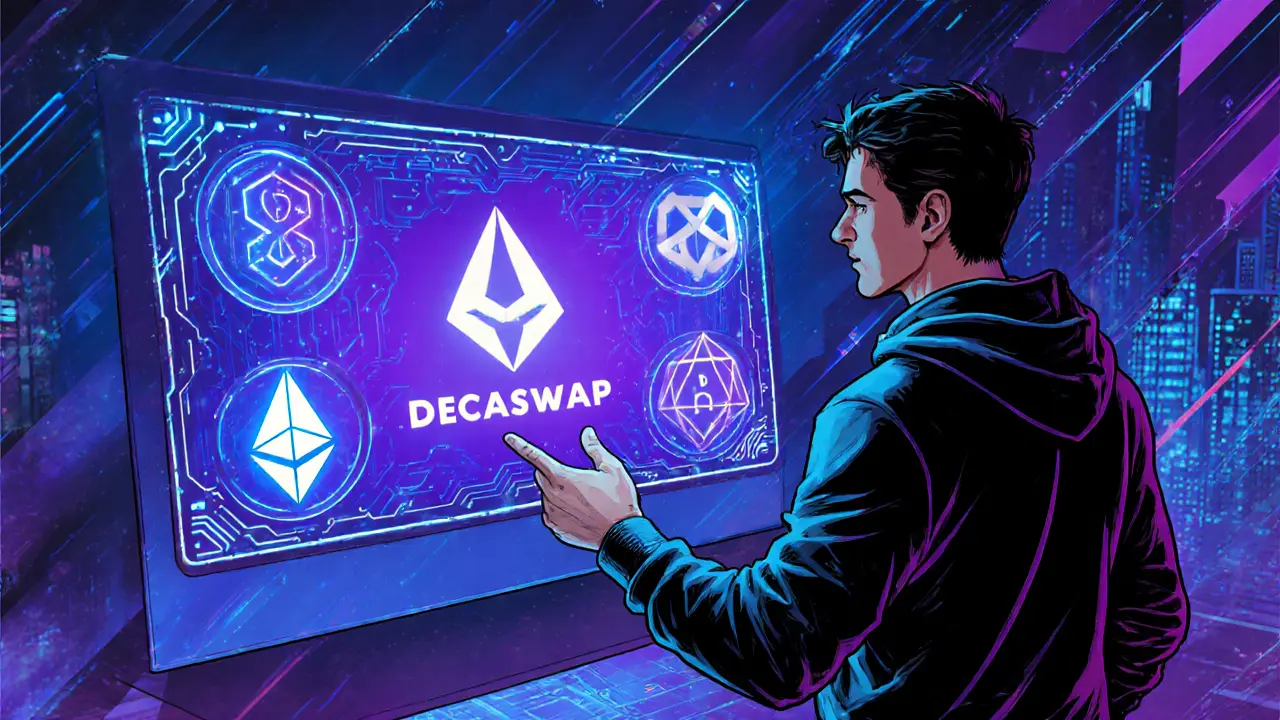Decaswap Crypto Exchange Review: Features, Fees, and How It Stacks Up
A thorough Decaswap crypto exchange review covering fees, security, liquidity, tokenomics, and how it compares to top DEXs in 2025.
Continue ReadingWhen talking about Decaswap fees, the charges users pay for each token swap on the Decaswap decentralized exchange. Also known as swap fees on Decaswap, they combine a base protocol fee, a liquidity provider (LP) share, and the underlying network’s gas cost. Understanding each piece helps you forecast how much a trade will actually cost. For context, Decaswap, a DEX built on Ethereum that lets anyone trade tokens without a central order book operates under the same fee principles as other automated market makers, but it tweaks the percentages based on token volatility and pool depth. Meanwhile, the broader DEX, a platform where trades happen on-chain via smart contracts landscape influences these fees through competition, fee‑tier options, and protocol upgrades. The result is a dynamic cost model where each swap pulls from three sources: the protocol’s flat fee, the LP’s reward slice, and the gas needed to execute the transaction. Below you’ll find a collection of articles that unpack each aspect in more detail, from calculating exact swap costs to comparing Decaswap’s fee model with other DEXs. Whether you’re a casual trader looking to avoid surprise charges or a liquidity provider seeking optimal returns, the pieces ahead give you the tools to navigate Decaswap fees confidently.What Drives Decaswap Fees?
Each component of a Decaswap fee serves a purpose. The protocol fee, usually a fixed 0.25 % of the trade volume, funds development and security audits. Liquidity providers earn a proportion—often matching the protocol fee—to compensate for the risk of impermanent loss and to keep pools deep. Finally, gas fees reflect real‑time network congestion; during peak demand, a simple swap can cost several dollars in gas, dwarfing the protocol and LP portions. Users can lower gas costs by timing trades for off‑peak hours or by using layer‑2 solutions that Decaswap may support in the future. Fee tiers also exist: high‑volume traders can qualify for reduced protocol fees, while smaller swaps stay at the base rate. By breaking down these three elements—protocol, LP, and gas—you can spot where savings are possible and where costs are inevitable.

A thorough Decaswap crypto exchange review covering fees, security, liquidity, tokenomics, and how it compares to top DEXs in 2025.
Continue Reading